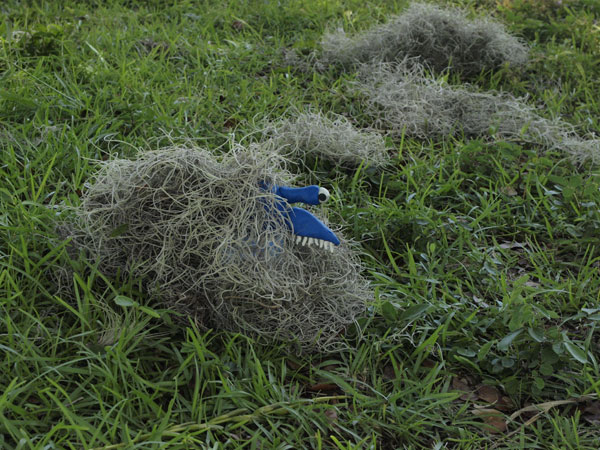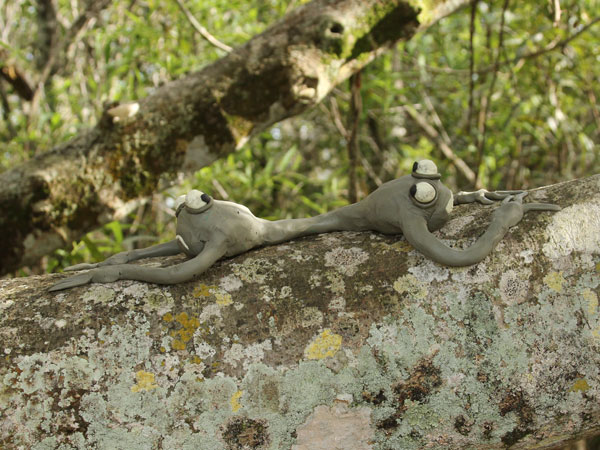
Karl Staven: Resident Animator
Although I grew up in Georgia, since I graduated from high school I’ve spent most of my time in the northeast. When I was accepted into the AIRIE program more than a year ago, I was excited to return to the deep south, about as deep as you can get (Key West is its own world).
While I’ve had many reptiles as pets over the years (Burmese python, African savanna monitor, anoles, bearded dragon), I now have no desire to cage exotic or wild animals, even if they are captive born. Let them live out their lives in their natural environment. Conversely, don’t breed them to spend their entirety in a small terrarium. This residency would be an opportunity to see creatures in the wild, where they are meant to live. And I have. And no, my Burmese python was not released into the Everglades (his demise is a separate story).
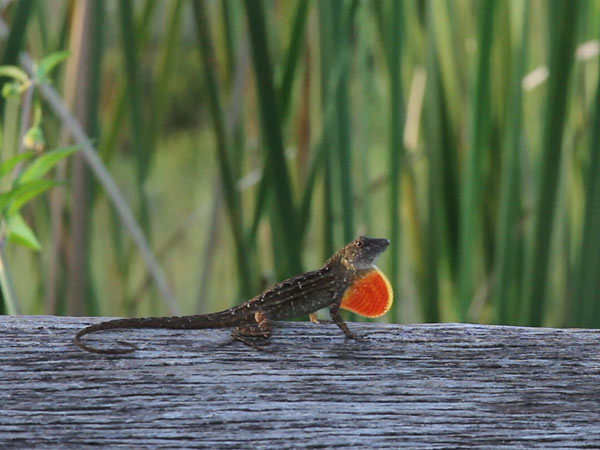
The Anhinga Trail has become a second home here, and not just because its close to my apartment. The Gumbo Limbo trail I’ve learned to avoid (at least during the month of August). I walked the Gumbo loop when I first arrived and could hear the mosquito battalions sending word out to their fellow soldiers, “Fresh meat, fresh meat! Come one and all to feast on this succulent northern flesh!” Quickly I was unable to appreciate the environment through the swarms circling my face and setting up blood extraction sites on any exposed flesh (and yes, I had spritzed myself thoroughly with bug dissuasion juice). As for Anhinga, I manage to get there every day to take at least one walk around the boardwalk loop. While the alligators are impressive, I’m equally enthralled by the small lizards that scurry across the path and bob up and down in an effort to attract a mate. It attracted me, though I have no desire for a long or short term romantic relationship with another species.
There was no set plan for a creative project to complete before I came down. I wanted to immerse myself in the environment before determining where to head. Once I was down here – walking along the trails, sitting and watching the animals, examining the plants – I came up with the idea of creating a video travelogue that looks at some of the actual creatures and plants that inhabit the Everglades while juxtaposing those real views with fantasy creatures that could have evolved here. Maybe.
Insects are a constant presence, both flying and hopping around and providing a constant buzzing soundtrack that runs on an endless loop in the background (with a regular pig frog exclamation). In August, a late afternoon/early evening stroll down the Anhinga trail always reveals a daily brazen grasshopper orgy that unfolds right before your feet.
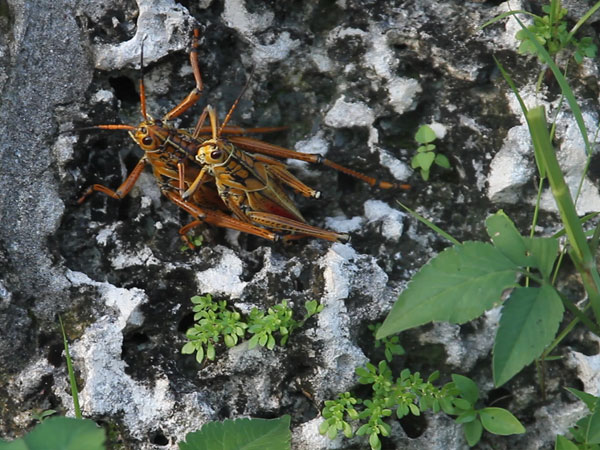
As a counterpart fantasy insect, I devised a camouflage butterfly that is able to change its pattern to match any tree where it alights. (Click on the image to see the sequence.)
The Spanish moss that hangs from the trees in the Anhinga parking lot is a lovely sight.
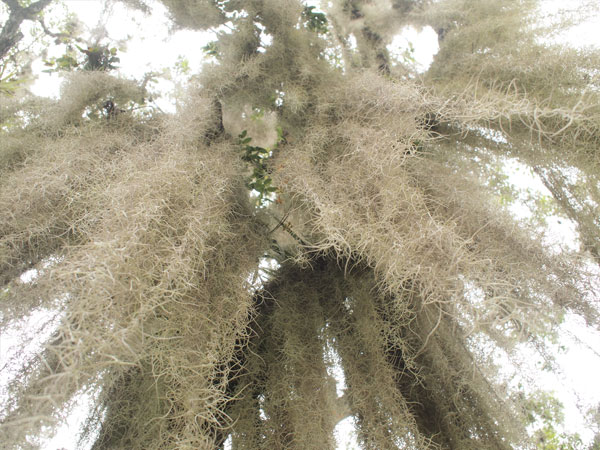
The trees also occasionally attract an audience of vultures eager to pull apart the rubber around the windshields of the cars parked below. Although I couldn’t understand what they were mumbling to each other, I believe they were discussing the culinary differences between Ford and GM windshield rubber and were leaning towards Ford because of the fear of a future GM recall.
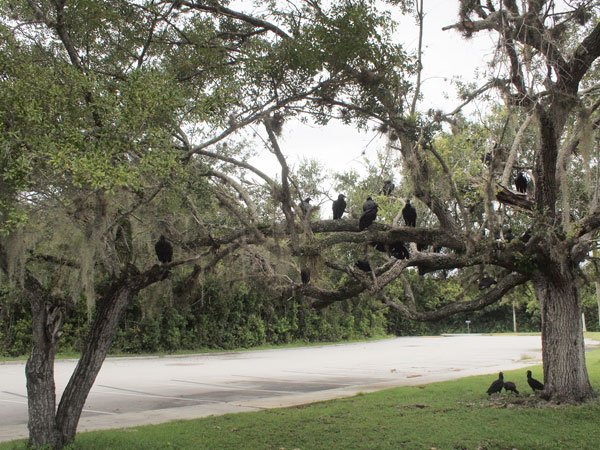
As I set up to shoot an animated sequence I attracted a crow who was eager to see if the coffee mug that served as the base of my creature was edible.

One direct peck determined it wasn’t, so he didn’t hang around for long. Using the Spanish moss that was lying on the ground around the bass of the tree, a coffee mug as a body base, and a clay head, this is the creature that resulted. (Click on the image to see the sequence.)
I didn’t just hang out at Anhinga, I also tried the trails along the long road to Flamingo, slathered in anti-bug grease, and packed lunches for the journeys. A picnic at Long Key Pine proved difficult with the location of the table.
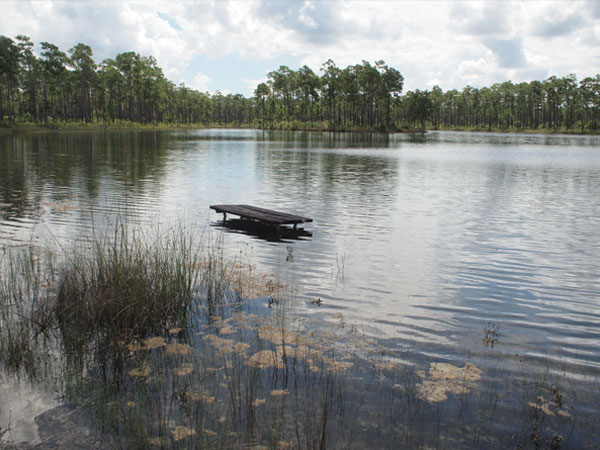
The pond apples prevalent throughout the park inspired the creation of a writhing fruit.
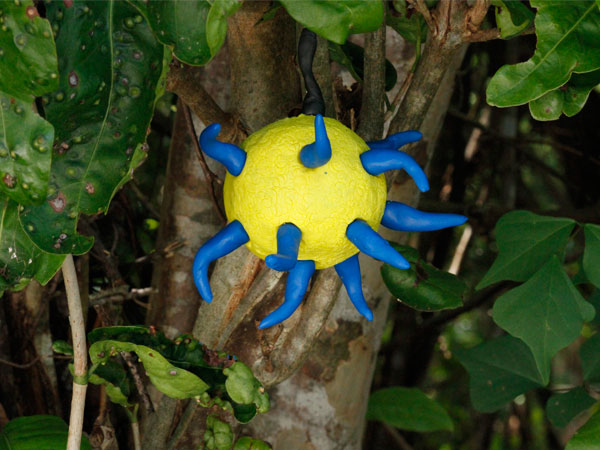
Shooting was difficult at times, battling both mosquitoes and the constant threat of rain. A bug suit and an umbrella were used to protect against the elements. So far both the camera and I have survived those elements.

There was even the construction of a creature that wasn’t based on an actual Everglades denizen, though it is somewhat frog-like. (Click on the image to see a short film about the creation of the animated sequence.)
After taking the two boat tours at Flamingo (interior and exterior), I completed the trifecta by riding the Shark Valley tram to the three story overlook. The two most interesting tales on the trip concerned a plane just off the road that had crash landed in the Everglades and the only known alligator attack on a visitor to the Everglades in a canal next to the return road. Apparently light planes in trouble look towards the 7 mile asphalt trail as a saving grace every 3 or 4 years, and this happened to be one of those years. I foolishly had my camera in the car next to me during the drive to Shark Valley, with the air conditioning on, so when we came upon the plane and I pulled my camera out to take a photo, the lens was fogged – it hadn’t adjusted to the intense heat yet. Not wanting to let this photo op go, I walked a half hour to the site when the tram returned to the station. And a half hour back.

As for the alligator attack, a young Brazilian boy visiting with his parents lost control of his bike and fell directly onto the back of a large alligator. The alligator chomped the 7 year old boy across his chest. While the father grabbed the alligator’s body to keep it from going underwater the mother punched the alligators head and finally thrust her arm into its mouth and down its throat until it released the boy, lacerating her hands in the process. The boy survived and had quite a tale to tell his schoolmates when he returned to Brazil. You can read more about it here.

After the Shark Valley loop I decided to drive along Loop Road in Big Cypress National Reserve. It’s mostly a dirt/gravel experience and I spent most of the trip swerving to avoid the potholes and grasshoppers that were crossing the road (already looking for lovers for the evening orgy ahead). About 2/3rds of the way through I saw a small creature crossing that didn’t appear to be a grasshopper. I thought I avoided it but stopped to confirm. When I walked back I saw a squashed mass of former living matter but it was crawling with ants and looked to be a grasshopper. The number of active ants confirmed that it had been there for a while and I wasn’t the cause of its demise. When I looked further I found a small turtle that I had missed. And then another one. I released them off the side of the road to improve their chances of growing up to be big turtles.
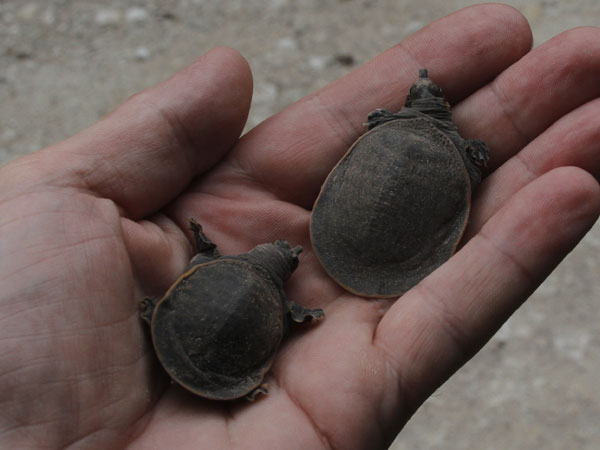
As my time here comes to a close I wonder about the future of the Everglades as global climate change continues to affect sea levels. Since the 1930s the sea level has climbed in the Everglades by 9 inches. If current predictions of sea level rise prove true, the Everglades particularly and Florida in general are the most vulnerable areas in the United States. I only hope that political will can rise to accept and engage this scientific reality in time to stem the rise of this slow inexorable threat.
It was an honor and a pleasure to be the August AIRIE artist in residency for 2014.
Recent Content
-
Artsarticle ·
-
Artsarticle ·
-
Artsarticle ·

